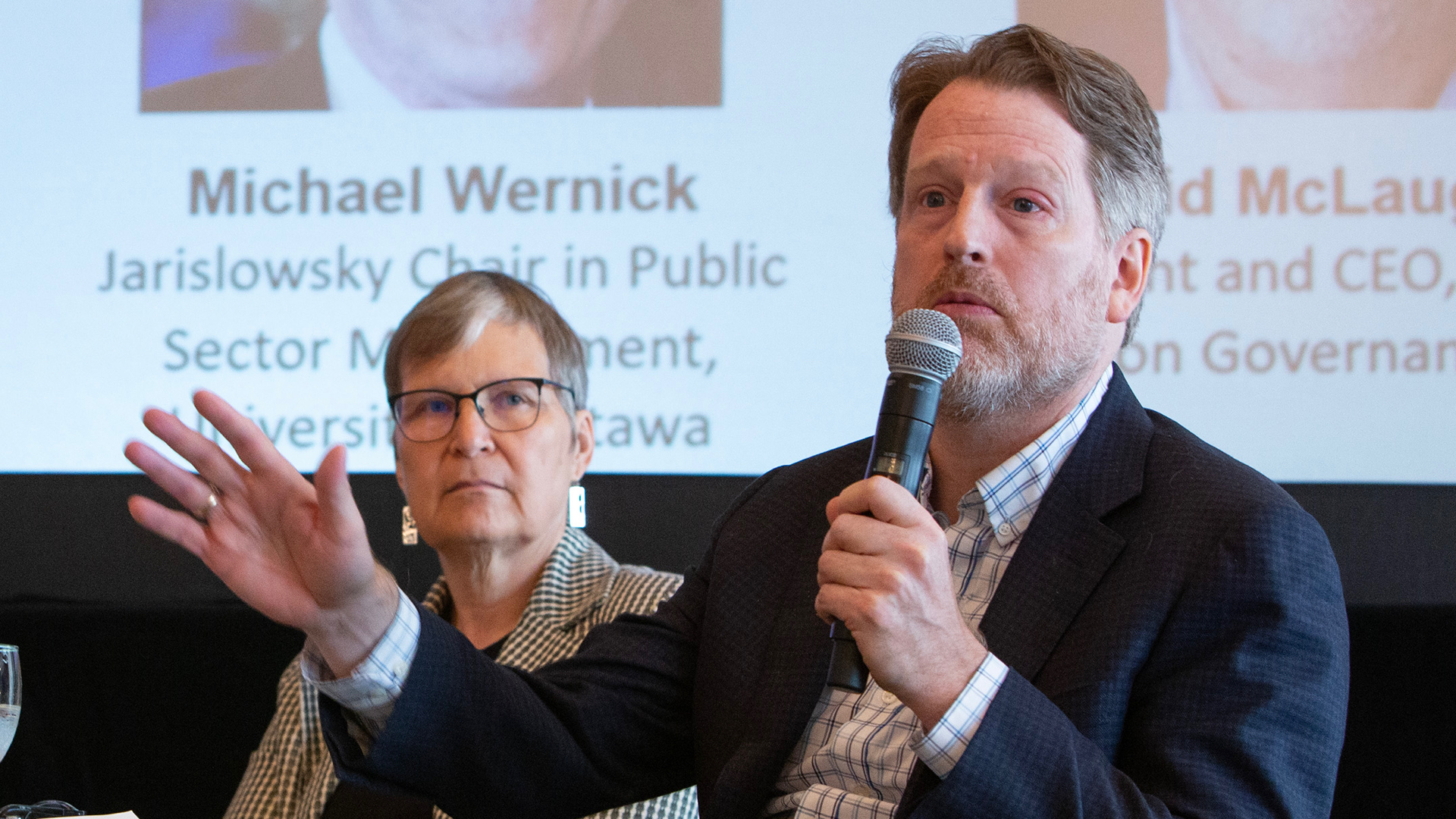
For the first time, the federal government and its 17 public service unions have agreed to discuss simplifying the thousands of pay rules and processes that derailed the troubled Phoenix pay system from the start.
This simplifying, which could take years to unfold, is a key piece of the government’s pilot project to build a new system – the Next Generation Human Resources and Pay (NextGen) – to replace Phoenix.
A joint union and management committee for NextGen has been examining issues around the new pay system for several years. The upcoming round of collective bargaining will be the first to take a stab at simplifying the rules and processes that have gummed up Phoenix since its launch in 2015.
However, there are many potential problems.
“They (the government) can’t let technology drive their business processes. They have to fix business processes before implementing new technology. In the case of Phoenix, the opposite occurred. Not having fixed those processes and collective agreements dooms NextGen,” said a source familiar with the project who is not authorized to speak publicly.
Some say this willingness to simplify a myriad of contracts could be a watershed moment in federal labour history, which has been rocky since the Lester B. Pearson Liberal government introduced collective bargaining in the 1960s. Public service reformers have pressed for decades to modernize compensation and a human resources regime built for another era.
They are also heading into these talks at a time when COVID-19 has upended work. As provinces lift pandemic restrictions, departments are gearing up for a partial return to the office with a hybrid workforce, part of which will continue to work from home. The federal government is also studying the future of work in a world where technology, automation and AI are changing jobs and the skills needed in the public service.
Despite the pressure to modernize, it remains to be seen how far the two sides are willing to go. Unions say no proposals have been put on the table.
Phoenix was built on PeopleSoft 9.1, an off-the-shelf software. IBM built the system, which was heavily customized to handle the complicated public service regime with 80,000 pay rules and 105 collective agreements for 300,000 employees.
Technology experts long argued the complexities of the pay rules were a root cause of Phoenix’s problem. They say rules and processes should have been reduced before the government started work on Phoenix, and they argue that these remain a significant challenge for any new system. On top of that, the government has a mishmash of 37 human resource systems that feed into Phoenix, each with its own processes.
Canada’s auditor general has issued the same warning over the years and said in this year’s audit of Phoenix’s continuing pay errors that it would be closely monitoring the NextGen project.
“We continue to be concerned that the new HR to pay system could repeat weaknesses we found in the HR to pay process and could pay some employees inaccurately,” said the report.
This time, however, the government wants a new combined pay and human resource system that can be configured to handle the pay regime without rewriting code to customize the software. That makes paring down the myriad of rules all the more critical.
Shared Services Canada (SSC), a federal agency responsible for technology across all federal departments, is leading the NextGen project. In an email, SSC said Toronto-based Ceridian, which bills itself as a global “human capital management” company, is configuring Dayforce, its flagship software, for a test run with the Department of Canadian Heritage to see if it can “support the government’s human resources and pay activities.”
However, concerns remain.
“What we don’t want here is for the employer to think: ‘Well, the reason why NextGen is having issues implementing is because the collective agreements are too complicated.’ Fine, let’s simplify them. We’re not against that,” said Dany Richard, president of the Association of Canadian Financial Officers, who co-chairs the joint management-union committee for NextGen.
As much as both sides are on board for the sake of getting a pay system that works, the pinch point will be cost. Unions don’t want their members to take a hit on their pay or benefits.
The Public Service Alliance of Canada, the largest union, is having preliminary discussions with Treasury Board about the pay system and harmonizing the language of its contracts.
“We’re going in curious and with an open mind to see what’s being proposed, and what they want to talk about, and seeing what we can come to agreements on,” said Greg Phillips, president of the Canadian Association of Professional Employees, the third-largest public service union.
“But at the end of the day, it’s the employer’s responsibility to pay employees and they need to have the system in order to do that. And for modernizing HR, that’s their decision. It shouldn’t be done on the backs of employees.”
Unions have previously argued that if the government wants to reduce rules, the fastest way is to pick the most beneficial provision and make it the standard for everyone. Take, for example, the nearly 40 different rules for overtime. The unions want the government to pick the most generous of the overtime rules and apply it to everyone.
Moving in and out of the public service shouldn’t be so hard
Unions argue that bringing employees up to the most generous provision may cost more in the short term, but it would be considerably cheaper than continuing to sink millions of dollars into fixing and maintaining Phoenix, which has already cost $1.4 billion in fixes.
“Let’s just put it to the common denominator, whatever it is, and write it off. It may sound like public servants gain and will get more benefits. But having clear collective agreements that are consistent will help simplify the pay system,” said Richard.
The government already spends about $53 billion a year on salaries and benefits for employees, which is 60 per cent of its total operating costs. After the spending spree to combat COVID-19, there is little appetite to pay public servants more.
Another complicating factor is that the unions have negotiated rules for pay and benefits over 60 years that are specific to each of more than 80 occupational groups in the public service.
On top of basic salary — and any raises or promotions — public servants are entitled to various allowances, such as for education, living in remote areas, acting in a higher job classification, bilingual bonuses and shift premiums. The pay for part-time or hourly employees is even more complex. Layered on top of that are rules within rules — with arcane language that often has conflicting interpretations.
One solution is harmonizing language so that all definitions are the same, such as for “family” which is key to various types of leave. Or acting pay, which kicks in for some employees after one day of filling in for someone in a higher job classification but which in another contract requires three days of doing that.
For vacation pay, some employees are entitled to four weeks after eight years of service and others get it after five years. With overtime, some employees get double time on Sunday whether they work Saturday or not, while others get double time on Sunday only after working Saturday at time and a half. In short, the rules are many and are all over the map.
The government has a pile of allowances, which employees receive on top of salaries that could, for example, be rolled into base salaries. They include retention allowances, extra pay for employees whose skills are in short supply, and allowances for meals, vehicles, travel, and clothing, such as uniforms, safety boots, and glasses.
SSC officials were unavailable to expand upon the project or its possible scale and scope beyond a brief message.
SSC said in an email that NexGen has now moved into the design and experimentation stage “which will continue to inform and define the way forward.”
“NextGen HR and Pay initiative will produce options and recommendations for a human resources and pay system that meets the complex needs of the (government),” it added.
This article was produced with support from the Accenture Fellowship on the Future of the Public Service. Read Kathryn May’s previous articles on the future of the public service.









